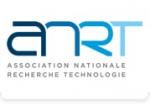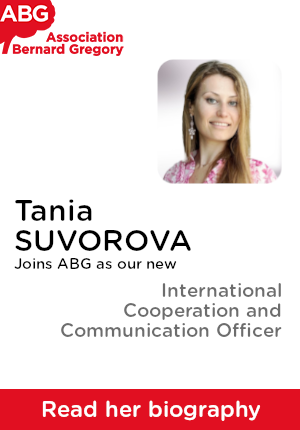Étude de la fission de l’uranium-235 induite par des neutrons de 0.5 à 40 MeV à NFS-SPIRAL2 avec le spectromètre FALSTAFF et le code FIFRELIN // Study of uranium-235 fission induced by neutrons from 0.5 to 40 MeV at NFS-SPIRAL2 using the FALSTAFF spectr
| ABG-134220 | Thesis topic | |
| 2025-11-06 | Public/private mixed funding |
CEA Caen Grand Accélérateur National d’Ions Lourds
Saclay
Étude de la fission de l’uranium-235 induite par des neutrons de 0.5 à 40 MeV à NFS-SPIRAL2 avec le spectromètre FALSTAFF et le code FIFRELIN // Study of uranium-235 fission induced by neutrons from 0.5 to 40 MeV at NFS-SPIRAL2 using the FALSTAFF spectr
- Physics
Physique nucléaire / Physique corpusculaire et cosmos / Physique nucléaire / Physique corpusculaire et cosmos
Topic description
Le projet présenté ici a un objectif double. Il s’agira pour notre équipe de réaliser (étalonnage, montage, prise et analyse des données) une première expériénce avec le détecteur FALSTAFF dans sa configuration à deux bras de détection. Une telle géométrie permettra la mesure en coïncidence des deux fragments émis par la fission déclenché par des neutrons rapides (entre 0,5 et 40 MeV environ sur la ligne de neutrons de SPIRAL2-NFS). L’utilisation de la cinématique directe permet de contrôler évènement par évènement la réaction détectée, notamment l’énergie d’excitation du noyau qui fissionne par la détermination de l’énergie cinétique du neutron incident.
Pour cette première expérience, nous employerons une cible de 235U, dont la fission dans les réacteurs nucléaires est au coeur de leur principe de production d’énergie. Ainsi, une compréhension extrêmement détaillée de la fission de ce noyau déclenchée par les neutrons est indispensable. Cette mesure complète qui inclura non seulement l’identification des deux fragments de fission mais également la détermination de leur cinématique sera pratiquement une première scientifique dans la méthode de la cinématique directe où le faisceau de neutrons et dirigé sur la cible d’uranium. Pour permettre cette expérience, recommandée par le comité du GANIL et qui se fera en 2026, nous avons fait évoluer le spectromètre FALSTAFF améliorer ses performances de détection, notamment grâce au financement que la région Normandie nous a octroyé. Ce travail expérimental se complètera d’un travail détaillé sur un modèle théorique de la fission développé par nos collaborateurs du CEA-Cadarache auquel nos données avec FALSTAFF serviront de point de comparaison précis. Le test de ce modèle sur des données aussi complètes que celles de FALSTAFF n’a encore pas été réalisé.
------------------------------------------------------------------------------------------------------------------------------------------------------------------------
------------------------------------------------------------------------------------------------------------------------------------------------------------------------
The presented project has two main objectives. The first one is the realization (building, calibration, data taking and data analysis) of a first experiment with the FALSTAFF detector in its configuration with two detection arms. In such a configuration, FALSTAFF will be able to detect in coincidence both fragments emitted by fast-neutron triggered fission reactions. These neutrons will be provided by the neutron beam of SPIRAL2-NFS in GANIL. The advantage of using direct kinematics is the ability to determine on an event-by-event basis the excitation energy of the fissioning nucleus by the measurement of the incident-neutron kinetic energy.
For this first experiment, we will have a uranium 235 target. 235U is the main source of fission neutrons in nuclear reactors and therefore at the heart of the system. Hence, the understanding of neutron-induced fission of 235U is essential and the rather exclusive data FALSTAFF will provide, with not only the identification of the fission fragments but also their kinematics will permit to reconstruct also the fissioning system. Such a measurmement in direct kinematics have never been done, to our knowledge, with the accuracy we are aiming at.
To perform this exepriment, we have improved and added detection capabilities to the FALSTAFF spectrometer, in particular with the financial support of the Région Normandie over the last two years. This experiment will be completed by a work to be done on a theoretical model developed by our collaborators of CEA-Cadarache. We will compare our detailled data with predictions of the model and have the model evolve, according to the laws of nuclear physics in order to obtain results from the model close to the data. Such a test of this model on as complete data as those we will obtain with FALSTAFF have never been done so far.
------------------------------------------------------------------------------------------------------------------------------------------------------------------------
------------------------------------------------------------------------------------------------------------------------------------------------------------------------
Pôle fr : Direction de la Recherche Fondamentale
Département : Institut de recherche sur les lois fondamentales de l’univers
Service : Département Grand Accélérateur National d’Ions Lourds
Laboratoire : Grand Accélérateur National d’Ions Lourds
Date de début souhaitée : 01-10-2026
Ecole doctorale : Physique, Sciences de l’Ingénieur, Matériaux, Énergie (PSIME)
Directeur de thèse : DUCRET Jean-Eric
Organisme : CEA
Laboratoire : DRF/IRFU//GANIL
URL : https://www.ganil-spiral2.eu/wp-content/uploads/2025/10/FALSTAFF-2B-thesis2026e.pdf
Pour cette première expérience, nous employerons une cible de 235U, dont la fission dans les réacteurs nucléaires est au coeur de leur principe de production d’énergie. Ainsi, une compréhension extrêmement détaillée de la fission de ce noyau déclenchée par les neutrons est indispensable. Cette mesure complète qui inclura non seulement l’identification des deux fragments de fission mais également la détermination de leur cinématique sera pratiquement une première scientifique dans la méthode de la cinématique directe où le faisceau de neutrons et dirigé sur la cible d’uranium. Pour permettre cette expérience, recommandée par le comité du GANIL et qui se fera en 2026, nous avons fait évoluer le spectromètre FALSTAFF améliorer ses performances de détection, notamment grâce au financement que la région Normandie nous a octroyé. Ce travail expérimental se complètera d’un travail détaillé sur un modèle théorique de la fission développé par nos collaborateurs du CEA-Cadarache auquel nos données avec FALSTAFF serviront de point de comparaison précis. Le test de ce modèle sur des données aussi complètes que celles de FALSTAFF n’a encore pas été réalisé.
------------------------------------------------------------------------------------------------------------------------------------------------------------------------
------------------------------------------------------------------------------------------------------------------------------------------------------------------------
The presented project has two main objectives. The first one is the realization (building, calibration, data taking and data analysis) of a first experiment with the FALSTAFF detector in its configuration with two detection arms. In such a configuration, FALSTAFF will be able to detect in coincidence both fragments emitted by fast-neutron triggered fission reactions. These neutrons will be provided by the neutron beam of SPIRAL2-NFS in GANIL. The advantage of using direct kinematics is the ability to determine on an event-by-event basis the excitation energy of the fissioning nucleus by the measurement of the incident-neutron kinetic energy.
For this first experiment, we will have a uranium 235 target. 235U is the main source of fission neutrons in nuclear reactors and therefore at the heart of the system. Hence, the understanding of neutron-induced fission of 235U is essential and the rather exclusive data FALSTAFF will provide, with not only the identification of the fission fragments but also their kinematics will permit to reconstruct also the fissioning system. Such a measurmement in direct kinematics have never been done, to our knowledge, with the accuracy we are aiming at.
To perform this exepriment, we have improved and added detection capabilities to the FALSTAFF spectrometer, in particular with the financial support of the Région Normandie over the last two years. This experiment will be completed by a work to be done on a theoretical model developed by our collaborators of CEA-Cadarache. We will compare our detailled data with predictions of the model and have the model evolve, according to the laws of nuclear physics in order to obtain results from the model close to the data. Such a test of this model on as complete data as those we will obtain with FALSTAFF have never been done so far.
------------------------------------------------------------------------------------------------------------------------------------------------------------------------
------------------------------------------------------------------------------------------------------------------------------------------------------------------------
Pôle fr : Direction de la Recherche Fondamentale
Département : Institut de recherche sur les lois fondamentales de l’univers
Service : Département Grand Accélérateur National d’Ions Lourds
Laboratoire : Grand Accélérateur National d’Ions Lourds
Date de début souhaitée : 01-10-2026
Ecole doctorale : Physique, Sciences de l’Ingénieur, Matériaux, Énergie (PSIME)
Directeur de thèse : DUCRET Jean-Eric
Organisme : CEA
Laboratoire : DRF/IRFU//GANIL
URL : https://www.ganil-spiral2.eu/wp-content/uploads/2025/10/FALSTAFF-2B-thesis2026e.pdf
Funding category
Public/private mixed funding
Funding further details
Presentation of host institution and host laboratory
CEA Caen Grand Accélérateur National d’Ions Lourds
Pôle fr : Direction de la Recherche Fondamentale
Département : Institut de recherche sur les lois fondamentales de l’univers
Service : Département Grand Accélérateur National d’Ions Lourds
Candidate's profile
doctorat en physique nucléaire
Apply
Close
Vous avez déjà un compte ?
Nouvel utilisateur ?
More information about ABG?
Get ABG’s monthly newsletters including news, job offers, grants & fellowships and a selection of relevant events…
Discover our members
 Laboratoire National de Métrologie et d'Essais - LNE
Laboratoire National de Métrologie et d'Essais - LNE  Institut Sup'biotech de Paris
Institut Sup'biotech de Paris  Groupe AFNOR - Association française de normalisation
Groupe AFNOR - Association française de normalisation  TotalEnergies
TotalEnergies  ASNR - Autorité de sûreté nucléaire et de radioprotection - Siège
ASNR - Autorité de sûreté nucléaire et de radioprotection - Siège  Aérocentre, Pôle d'excellence régional
Aérocentre, Pôle d'excellence régional  SUEZ
SUEZ  Ifremer
Ifremer  Généthon
Généthon  Tecknowmetrix
Tecknowmetrix  CASDEN
CASDEN  ADEME
ADEME  ANRT
ANRT  PhDOOC
PhDOOC  CESI
CESI  Nokia Bell Labs France
Nokia Bell Labs France  MabDesign
MabDesign  ONERA - The French Aerospace Lab
ONERA - The French Aerospace Lab  MabDesign
MabDesign



